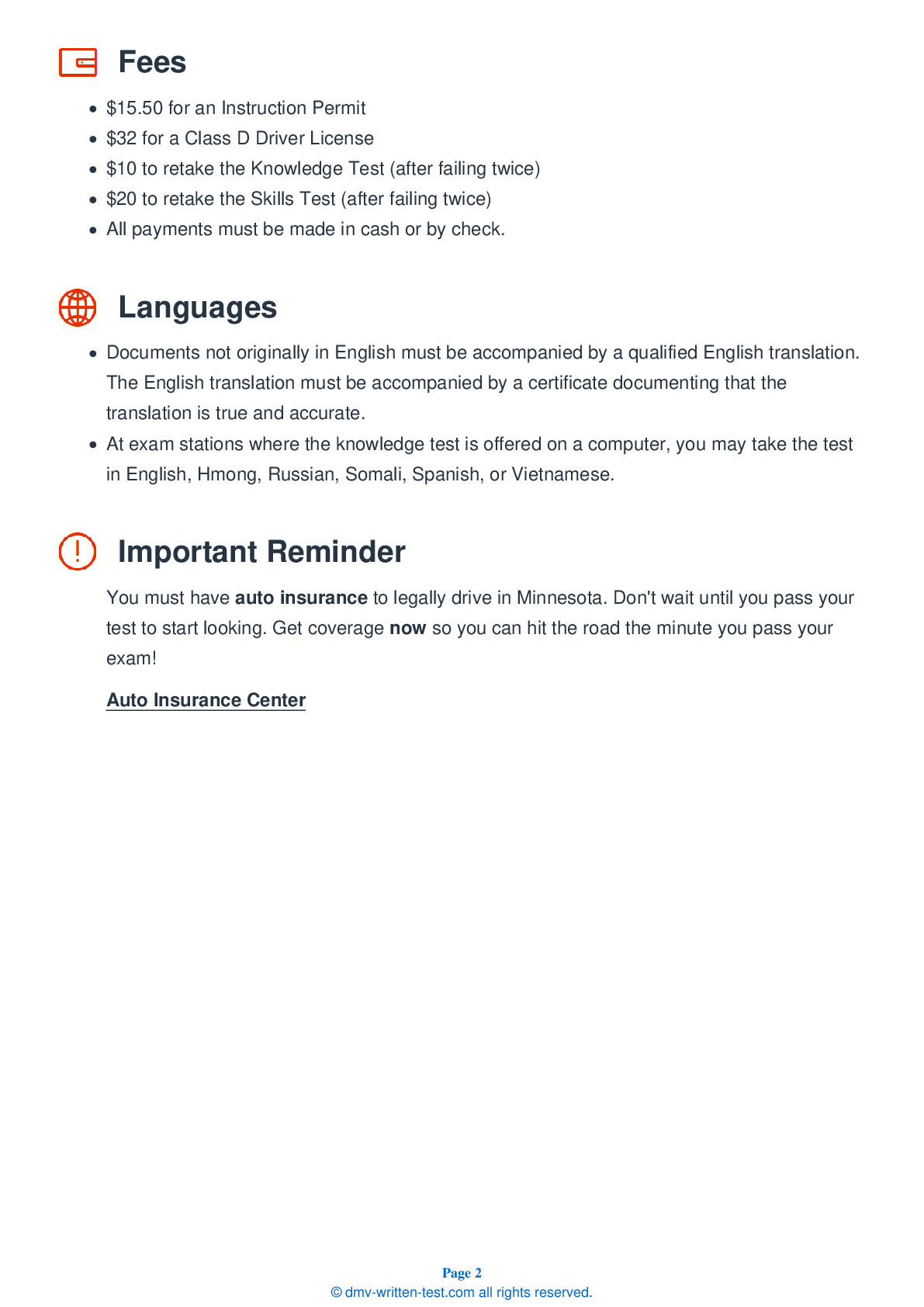2025 Minnesota Permit Test 22
The following questions are from real DMV written tests. These are some of the actual permit questions you will face in Minnesota. Each permit practice test question has three answer choices. Select one answer for each question and select "grade this section." You can find this button at the bottom of the drivers license quiz. For a complete list of questions and answers for Minnesota please visit https://cheat-sheets.dmv-written-test.com/en/minnesota/car.
Number of Tests
Number of Question
Passing Score
17. When driving in fog, you should use your high beam headlights.
Explanation
You should use your low beam headlights when driving in fog. High beam headlights may cause the light to reflect off of the fog and into your eyes.
18. If your car starts to skid, turn your steering wheel:
Explanation
If your vehicle goes into a skid, you should turn the steering wheel in the direction you want the vehicle to go. As soon as the vehicle begins to straighten out, turn the steering wheel back the other way.
19. Drinking coffee after drinking alcohol:
Explanation
Drinking coffee will not reduce your blood alcohol concentration (BAC). While it may help you to stay awake, it cannot change your BAC or make you sober.
20. Which is not a factor in determining the distance that it takes to stop your vehicle?
Explanation
The distance required to stop your vehicle depends on perception time, reaction distance, and braking distance. This changes with speed and road conditions.
21. A leaky exhaust system in your vehicle is dangerous because it can cause:
Explanation
The exhaust system carries exhaust gas out of the vehicle and prevents fumes from entering into the passenger compartment. To prevent carbon monoxide poisoning, keep your exhaust system free of leaks. Replace all defective parts immediately.
22. Under normal driving conditions, drivers should maintain a following distance of at least:
Explanation
Applying the three-second rule is a way to help keep a safe distance between your car and the vehicle ahead of you. This rule pertains to standard-length vehicles driving under normal conditions.
23. If there are two railroad tracks next to each other:
Explanation
If there are two railroad tracks next to each other, watch for a second approaching train after one train passes. Do not begin to cross the tracks until you’re sure no train is approaching from either direction on either track.
24. When changing lanes, you should:
Explanation




